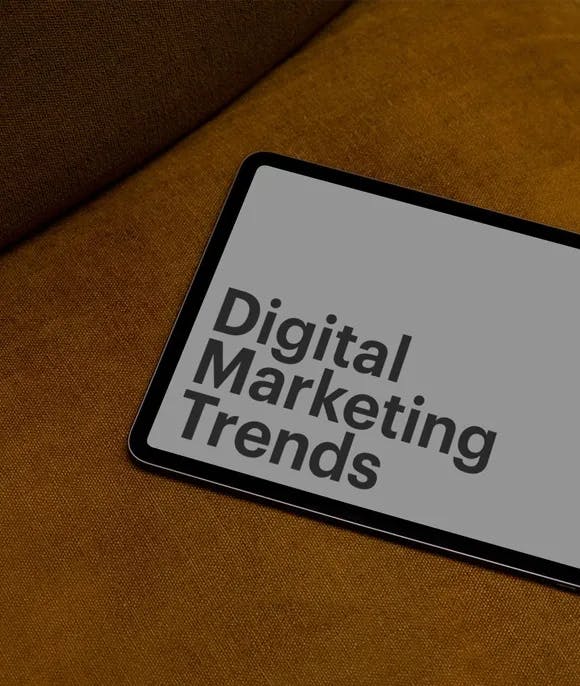We have been made aware of unauthorized use of our company name in fraudulent activities. Fleava only operates through fleava.com. Any other domains or contacts claiming to represent us are fraudulent.
If you receive suspicious messages, do not engage—report them to the authorities. For official inquiries, contact hello@fleava.com.
The Power of Branding to Advance Your Business
/ Journal — Insight: Branding
What is Branding?
By building and defining a brand in consumers' eyes, branding is the process of imparting meaning to a particular business, product, or service. By defining and shaping the brand image, branding can help people immediately recognize and experience their brand and offer them a reason to prefer their products over those of the competition.
By consistently delivering a product that is in line with what the brand promises, the goal is to draw in and keep the support of devoted customers as well as other stakeholders.
What is Branding Design?
Branding design refers to how a company chooses to communicate its brand identity to the public visually and aesthetically. Identifying marks, logos, names, taglines, voices, and tones are frequently used to communicate branding design. Several of the most known and enduring brands are those with the strongest branding. These include some fields in the food and beverage, toys, and automobile industries that have been established for decades or more and are able to survive because of their strong branding.
Company/corporation, product, and personal brands that apply to individuals are the three basic categories of brands. No matter the type, design branding still applies. The way a brand chooses to express itself on social media, in physical stores, or even in the interior design of company offices is an example of branding design, besides the core components of brand identity design.
In order to strengthen their brand image in the minds of their audience, help to leave a lasting impression, and help to cement emotional connections with the brand, it is becoming more and more crucial for businesses to ensure their brand design is communicated consistently across all of these touchpoints, frequently by using brand guidelines.
Several of the most known and enduring brands are those with the strongest branding.
The Importance of Branding
In essence, your brand's values determine its personality. How does your company treat its customers? How does it affect people's emotions? What pledges does your company's name make? What doesn't your company reject to compromise? What does your company's reputation suffer from?
Here are several justifications for the significance of brand values:
1. Branding Aids in Differentiating Your Company From Competitors
The same product or service may be provided by a number of businesses, both big and small, but can they all provide the same guarantees? Your brand's values will help you stand out from the competition and draw customers who share your values. Some individuals may prefer your brand above others with different values because they, too, are rebellious and cutting edge or want to feel that way. This is possible if your brand is a little bit cutting-edge and rebellious.
2. The Advantage of Branding Help Small Business Against Large Corporations
Small businesses frequently believe they can't compete with big enterprises (especially when it comes to cost), but by aligning their brand values with their consumers' values, they can provide a better customer experience. Branding also helps introduce your business at a relatively affordable cost If customers feel better about supporting local businesses, they won't mind spending a little bit extra. Perhaps your company strongly supports fair trade or the environment; customers who share these beliefs will be drawn to your brand.
3. Aids You in Energizing Your Small Business
Anyone who has managed a small business knows that success requires a certain level of tenacity. Being motivated and determined every day, especially when the stakes are great, is difficult. Owners of small firms that are genuinely passionate about their work are what drive them to success. And as a business owner, you must have a deep, primordial belief in the principles of your brand in order to be authentically passionate.
4. Building Trust Through Branding
The audience's trust is one of the most significant assets a business can possess, but it's not always easy to gain. If a company lacks essential branding components, it will be more difficult for it to attract customers.
Many of us hope to see good branding when we look at businesses in any industry, so for some, its absence could raise a warning flag. If your company does not have strong branding, you have very little to show for it.
You probably already know which company you would trust more if you had to select between two, one of which had obvious, professional branding and the other didn't. By adopting branding, you may show potential customers that your business is trustworthy and well-established. By doing this, you may immediately inform customers of what to expect from your business. Potential clients will see that you invested time and effort into building your brand by seeing this as an investment in the advancement of your company.
Also read: Branding: Be the Subconscious of your Costumer
5. Branding Creates Loyal Customers
You want to attract customers who will keep using your business and are loyal, not simply ones who know about it and be your customer just once. Your clients will be able to relate to your brand more than you think and become super loyal if you have strong branding that makes them believe in your brand.
You may affect people's emotions in many different ways and build their sense of loyalty to your company through branding. By establishing relationships with your audience through branding, you can eventually turn them into dedicated and loyal customers. By building a brand that people genuinely care about, you can outperform other companies who aren't taking advantage of this.
6. Your Advertisement Would Be Improved
Without advertisements, your firm won't be able to grow very much. Advertising and branding are closely related. If you want better advertising for your business, you must first concentrate on developing your brand.
You want everything in your advertising for your company to flow together and reflect the character and principles of your enterprise. When you haven't given your brand enough thought, this might be difficult. You are missing out on many chances to develop a great campaign if your branding is weak. When everything is connected, adding branding to your advertising will help your business become more recognizable.
Brand Identity
Your brand identity is what differentiates your company from the competition, just as your personal identity gives you unique quality.
An organization's brand identity is the result of all the components it creates to convey the right message to its clients. Even though the terms "brand identity," "brand image," and "branding" are commonly used interchangeably, they are not the same thing.
Branding is the marketing tactic of deliberately developing a distinctive identity. From the viewpoint of the general public, the brand represents the business.
What makes you instantly recognizable to your customers is your brand identity. The brand identity that your audience will associate with your goods or service will have an impact on your relationship with your customers, the growth of customer loyalty, and how they will perceive your brand.
A brand identity is made up of what your company stands for, your values, the way you market your goods, and the emotions you want customers to have when doing business with you. Your brand identity can be thought of as both the character of your company and a promise to your clients.
A brand identity is made up of what your company stands for, your values, the way you market your goods, and the emotions you want customers to have when doing business with you.
Brand Guidelines
A style guide, which is similar and comparable to a brand guide, is often confused and difficult to distinguish. Although your company's identification requirements are mentioned in both documents, a brand style guide concentrates on the overall appearance and visual identity. A style guide, on the other hand, concentrates on creating and modifying copy. A brand guide is also frequently referred to as a "brand style guide," despite the fact that it is a more comprehensive and design-focused document overall appearance than just a copy-based style guide.
Imagine the most well-known brands that come to mind. Because of the constancy of the written or visual messaging these brands convey, there's a good chance you've learned to recognize them. They all mirror the same brand colors. The language seems to be common and familiar. Everything is well-organized and cohesive, albeit not strict.
Here are some examples of the types of rules you might find in a brand style guide, along with the elements of a brand they can affect.
1. Mission and Values
The majority of businesses incorporate their mission statement and fundamental values in their brand guidelines. This statement helps represent your objective in the design decisions specified in the guide and exposes new readers to the brand story.
2. Buyer Persona
The fictionalized version of your ideal consumer is known as a buyer persona. It specifies whom your brand publishes content for by getting detailed information about the job title, age, gender, and professional problems of your customers. Your buyer persona directs the blog posts, advertising copy, and graphic materials that can draw in profitable leads and consumers for your company.
3. Logos
Although you must include your company's logo in the brand guide, you don't need to include every variation. According to the circumstance, the majority of businesses have a few different logo iterations. For larger treatments (like billboards or full-page advertisements), a large, intricate logo; for lesser treatments (like smaller advertisements or documents); and for unique circumstances, a small, intricate logo (like digital apps). In your brand guide, specify the required alignment and spacing. A few best practices for your logo treatment can help designers understand how to make all of your company's communications readable and professional in addition to your brand assets.
4. Color Palette
Your brand's color palette is a collection of hues that your business employs to generate all of its visual material. Your logo, website design, printed advertisements, and event collateral are all governed by these color schemes, which frequently use HEX or RGB color codes.
5. Typography
A list of the font families and styles that the company employs is frequently included in brand guides, along with useful style recommendations like optimal sizing and spacing. Organizing your typography, so the designer can avoid guesswork out of the design process and guarantee that all of your communications will seem polished and consistent.
6. Tone
Include the tone of your organization's visual identity and copy when creating your brand guide. Make sure the brand guide's design adheres to the visual tone of your business. If your online store has a whimsical aesthetic, include that in the brand guide's design. Give a brief description of your ideal messaging tone of voice for your brand (Is your brand approachable? Scientific? Humorous?). Give examples of messages that you believe properly capture the tone you want to convey.
7. Iconography
Does your organization utilize special drawings to match the brand's tone, or do you have a preferred style of photography? To guarantee that all the images your graphic designers use feel uniform and on-brand, incorporate a section on imagery into your brand standards, outlining what to use and what to avoid.
8. Typography
Beyond the typeface you use in your company logo, typography is a visual component of your brand style guide. Everything on your website, including the links and copy, as well as your tagline, complements the style of your blog. The user experience of your website is greatly influenced by the typography, therefore you should make sure it is both readable and aesthetically pleasing.
Examples of Powerful Worldwide Branding
1. Apple
Apple is without a doubt one of the most popular brands in our generation. Everywhere you go, people are familiar with their brand and identify it with high-end goods, distinctive designs, exclusive stores, and helpful workers.
Even if they have chosen a one-size-fits-all strategy, their customer service is unquestionably noteworthy because the protocol of each of their global stores is customized to local preferences, but they keep a consistent visual style across all of their locations. their content on the Apple website is carefully customized for audiences in other countries.
2. Starbucks
The reason for their success is the actual consumer experience related to coffee consumption. The focus is on elegant design, a welcoming environment, specialty coffee, helpful staff, and prompt service.
Simple solutions, Starbucks would like adding round tables to make customers who arrive alone feel less lonely, demonstrate how much they care and are attentive to the smallest things. They are one of the distinguishing characteristics of Millennials' daily lives, and social media has been successful in enhancing their brand recognition. They share the belief that we are all related in some manner by providing the same high-quality service all across the world.
The well-known coffee company was also among the first in its sector to profit from creating and putting in place an effective CRM system. By including a tailored reward system via mobile applications, they improved the company's brand image.
3. Zara
This European firm has managed to rule the world despite a highly competitive market. No matter whether the country is in issue, their trick is to mimic the newest high-end fashion trends and make them affordable for a bigger mid-price market.
Zara is dedicated to catering to a wide range of customers, representing all ethnicities and age groups. These fundamental principles—beauty, clarity, functionality, and sustainability—receive special attention. Because they view their customers as their most important brand asset, Zara provides outstanding customer service in all of their locations.
4. McDonald’s
McDonald's homogeneity is one of the essential ingredients in its success on a worldwide scale. Everywhere you go, McDonald's promises the same service, atmosphere, and food. Customers want consistency and comparable value regardless of location, and McDonald's provides both.
We can help them succeed by fostering their cultural sensitivity. For instance, McDonald's sells a special "Nasi Uduk" in Indonesia. McDonald's has added certain customized offers in addition to their universal meals to cater to the local preferences of the customers they serve.

